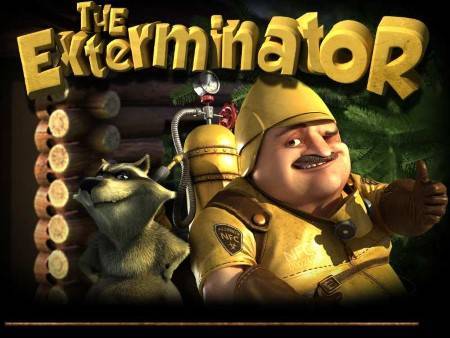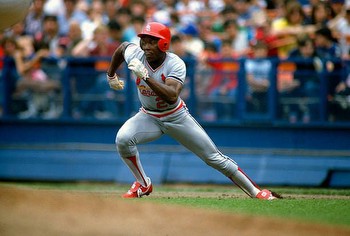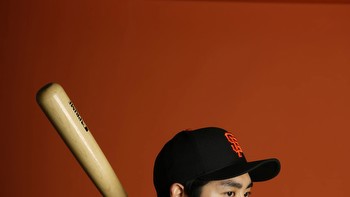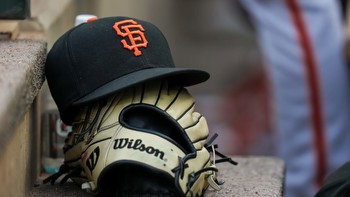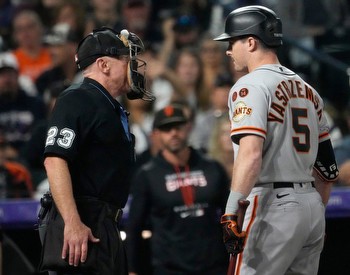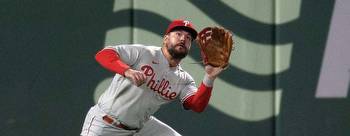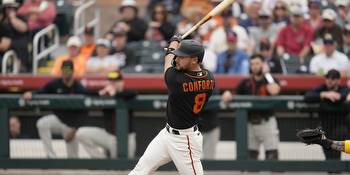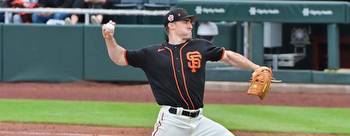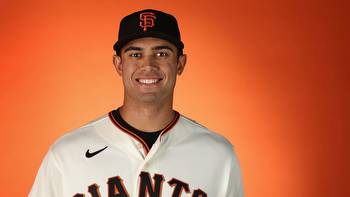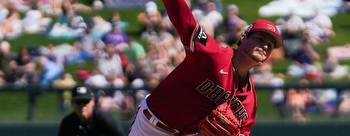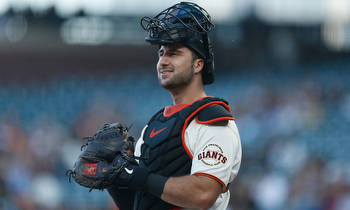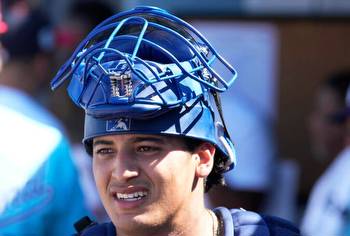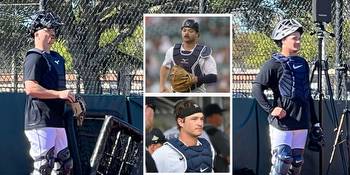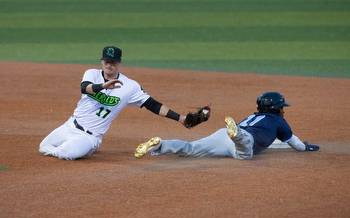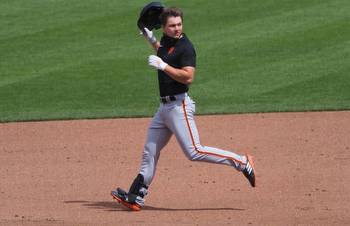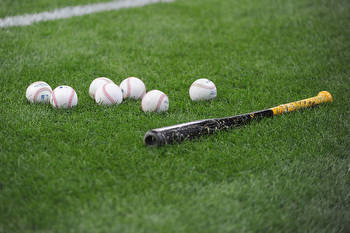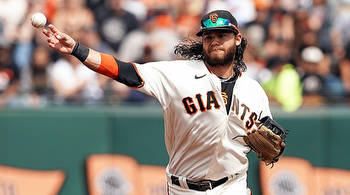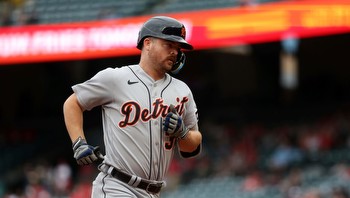Giants catchers work on the back pick, a favorite Buster Posey play
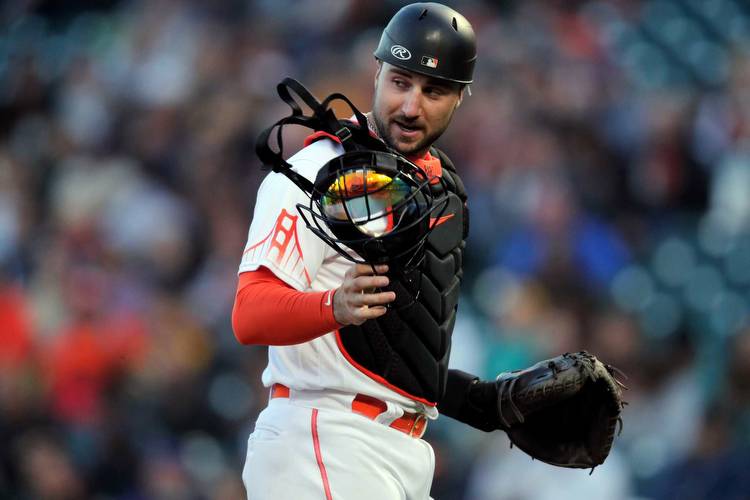
SCOTTSDALE, Ariz. – One term is being lobbed around this spring at Scottsdale Stadium more than any other: back pick.
With limited throwovers and bigger bases that reduce the distance between first and second, the San Francisco Giants, like many other teams, will have their catchers trying to keep baserunners honest by throwing behind them more often. Early in the season, maybe a lot more often.
“I think this year, we're going to see a lot of back picks, especially with the new rules,” veteran catcher Roberto Pérez said. “I’m a big fan, especially if you can get a quick out.”
“As soon as you catch the ball and then it's in your hand, you're a weapon,” catching coach Craig Albernaz said. “So why not find a way to utilize it?”
The four men in competition for the two big-league jobs behind the plate have worked on back picks all spring. And one of the Giants’ owners loves that. Buster Posey, who now has a minority stake the club, suggested that a reporter “could write a ton” about the play.
“There are so many subtleties and nuances to back picks,” the seven-time All-Star catcher said. “Getting a quick out with a back pick is great -- but just the threat of it accomplishes so much.”
That’s the Giants’ hope. If opponents know a catcher won’t hesitate to snap a throw behind a runner, they’ll trim down secondary leads. which might keep a double-play in line, keep a force on, prevent a man from going first to third. “One less step on the secondary can have a big impact,” Posey said of the extra few strides baserunners sneak in when it appears certain that the pitcher is about to go into his delivery.
And successfully executing a back pick is a blast for a catcher. It’s a nice individual moment, of course, but it also helps his pitcher out.
“It’s a momentum changer is what it is,” Posey said. “Especially if you pick a guy off second or third.”
What are the elements that make for a good back pick? It’s not as simple as just winging a throw to an infielder. Choosing the right time raises the odds of success, and that’s a matter of knowing the baserunner, the situation and the pitcher well.
Communication is also important -- especially with a man at first and a left-handed batter in the box, often obscuring the first baseman’s view of the catcher. PitchCom makes that a little easier.
“We’re just telling the first baseman to expect a throw anytime,” Albernaz said. “So for the catcher, if it’s a ball in the dirt, you just go. If the pitcher misses a spot towards first base, just snap it over there. The tricky ones are like when there are runners at first and second. Now we're actually throwing behind a trail runner at third.”
Pre-PitchCom, signaling for a back pick was trickier. Posey said that savvy baserunners can pick up such signs, so he and Brandon Crawford, his longtime teammate, sometimes would just exchange a look that meant “back pick.”
This was not a fool-proof method.
“Even as long as we played together, sometimes I would give Brandon a look and he didn’t pick it up,” Posey said. “Were there times I threw down to second and he wasn’t there? Oh yeah, for sure, but Brandon’s always close enough that you know he’ll at least be able to knock it down. That’s another thing with back picks: Trusting your infielders is incredibly important, knowing they’ll do whatever they can to get the throw.”
Throwing mechanics to first base vary; catchers can’t come right over the top as they would on a stolen-base attempt. There’s a side-arm action, generally, which takes some practice, and from there catchers differ a lot. Pérez stands up and wings it from the side. Joey Bart can throw it off either knee. Minor-leaguer Patrick Bailey “is a unicorn,” Albernaz said. “He can throw it from anywhere, sling it from any angle, it doesn’t matter.”
Then there is Rule 5 catcher Blake Sabol, who arrived throwing off his left knee and now goes off his right. “He was a little restricted because he’s 6-foot-4 and has long legs and he was cutting himself off,” Albernaz said “Going right has been more comfortable and just looks better, because when the knee comes down, the natural momentum takes over.”
Sabol said the switch has helped his throwing a lot. “I’m able to catch more mistakes with my right knee down and still get in the right position, even if I don't time it exactly right or if the ball is not exactly where I think it's going to be,” Sabol said. “I’m progressing every day.”
The most important part of the throw? “Confidence is first and foremost,” Posey said. “When the pitch comes, you have to just let it rip.”
“You have to be aggressive,” Wynns said. “You cannot be afraid to throw the rock around.”
Most catchers would like a nice, hard pitch when they’re going to back pick, but Posey said that’s not always going to be possible.
“The right pitch to execute to get the hitter out always supersedes a good pitch to throw,” Posey said. “It has to be the right pitch for the batter.”
With pitchers limited to two “disengagements” per plate appearance -- a third unsuccessful pickoff attempt automatically result in a balk -- another weapon also might come back into vogue: Posey suggested pitchouts will make a comeback.
While analysts don’t always love pitchouts because adding a ball to the count reduces the odds of getting an out, manager Gabe Kapler said the Giants will be making use of pitchouts on occasion.
Even a few back picks a game or a pitchout now and then will help keep runners close.
“I think it’s a great scare tactic,” starter Alex Wood said, noting that the pitchers have all been working on side-stepping, mixing up times to the plate and being quicker to the plate, too.
“We’ve just got to put in teams’ minds that we’re coming with a throw, so they’re aware and like, ‘Hey,I'm not going to get far off,’ ” Perez said. “We’ve just got to keep them closer to first base and second. That’s going to be huge.”
Reach Susan Slusser: [email protected]; Twitter: @susanslusser
